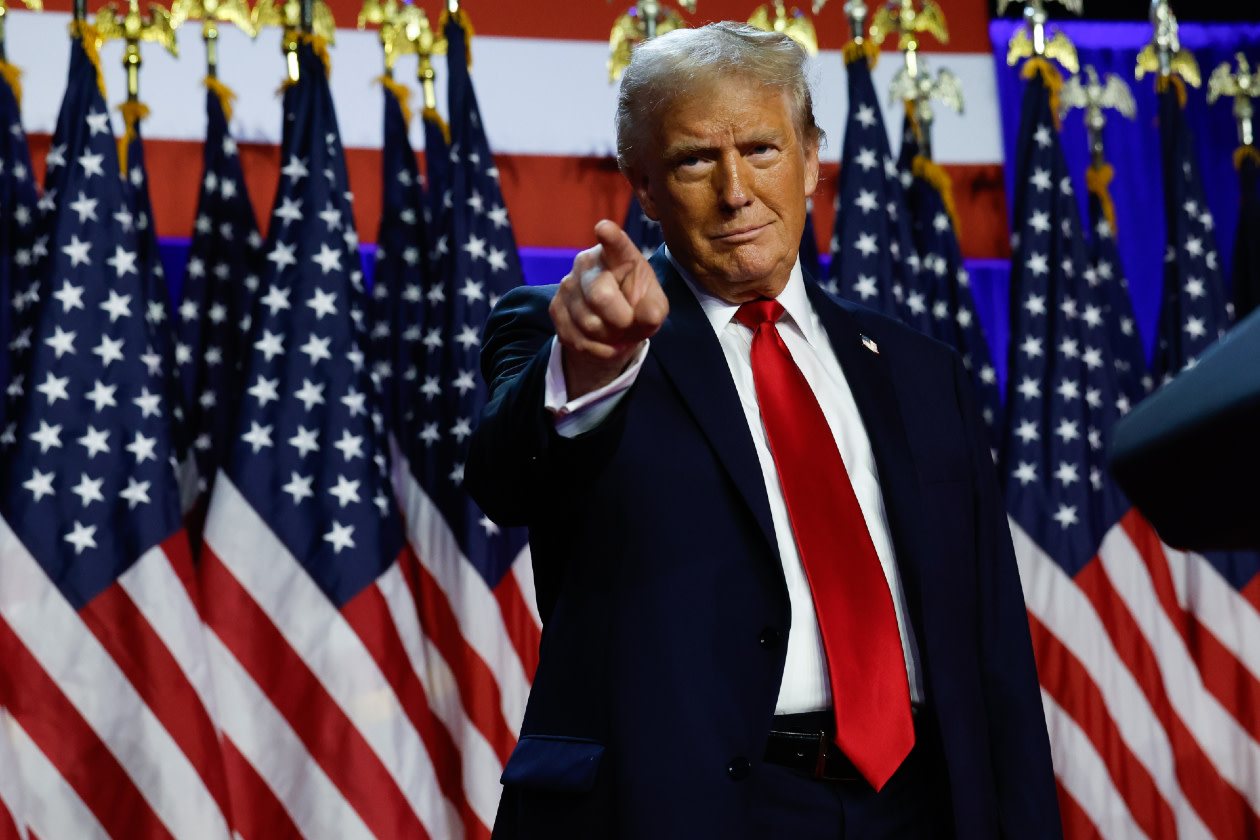Some of the volatility we’ve already seen on financial markets is likely to continue as speculation swirls about Donald Trump’s trade policies as he returns to the White House for a second term.
There’s inevitably a lot of focus on what the impact could be for the global economy when higher tariffs are introduced.
This article is not personal advice. If you’re not sure an investment is right for you, ask for financial advice. Investments will fall as well as rise in value, so you could get back less than you put in. Past performance isn’t a guide to the future.
Will Trump’s plans raise inflationary risks around the world?
Further tariffs on goods imported into the US might push inflation up as they could lead to higher prices for goods in American shops. This, in turn, could add to clamour for higher wages.
There are also concerns that Trump’s plan to curb immigration, reducing pools of available labour, could lead to upwards pressure on prices.
Worries that his policies will drastically limit the Federal Reserve’s (Fed) capacity to reduce interest rates has already rattled bond markets, pushing up government borrowing costs.
If widespread tariffs are introduced, the mighty dollar could strengthen further, which risks importing inflation to other countries, including the UK.
Lots of imports, which are bought on wholesale markets, are priced in dollars, which will be more expensive if the greenback takes on more muscle.
If countries hit back with tariffs on imports from the US, that could push up consumer prices further.
However, there’s also the possibility that global companies reduce the price of goods to try and stay competitive in the global market, which could potentially have a downwards impact on inflation.
Over the longer term, there’s a risk that the dollar might weaken if trade wars erupt though. This would likely lead to weakness in demand for American made goods and therefore slower growth in the US, which could prompt the Fed to lower interest rates.
For now, the pound has been pushed lower against the dollar to levels we’ve not seen since the Autumn of 2023. This has been a tailwind for the UK stock market.
The UK stock market has already reached record highs in January and there could be fresh potential ahead – especially for the FTSE 100 given it’s filled with multinationals which are likely to benefit from a cheaper pound.
Gold set to retain its shine?
Trump returns as geopolitical risks remain high in the Middle East and the Russia/Ukraine situation is still unresolved.
In times of uncertainty, one investment which had tended to do well is gold, which had a stellar run in 2024. Past performance is not a guide to the future.
The uncertain outlook, combined with increased buying from central banks, particularly in emerging markets, means the shiny stuff could continue do well as investors look to diversify their portfolios.
Interest rate decisions could be affected at the Bank of England
Policymakers at the Bank of England will be assessing the potential inflationary risks ahead which a new Trump presidency is likely to bring.
Government borrowing costs did rise amid concerns interest rates might stay higher for longer. However recent data pointing to stagnation in the UK economy has raised expectations for rate cuts at the February meeting of policymakers.
There’s also a chance that tariffs aren’t as punitive as the markets currently expect. If the polices are more targeted, inflationary risks could subside in the US and more cuts could be priced in.
What could Trump mean for stocks? – 4 areas to watch
Trump’s tariffs might help manufacturers focused on the US domestic market.
That means smaller American companies could benefit as US supply chains are beefed up.
If the Fed, as expected, goes slow with rate cuts, the higher interest rate environment could be a tailwind for the US financial sector.
The sector could get a further boost if Trump follows up with more de-regulation. This might make it easier for banks to loan out more money in the short term – but could lay the sector open to more risks longer term, particularly in the advent of another financial shock to the system.
Companies operating in the gig economy have been under pressure during the Biden administration. That’s because of new rules put forward making it more difficult for companies to classify workers as independent contractors rather than employees.
Lighter touch regulation of the labour market under a Trump administration could benefit companies ridesharing and delivery giants, which are reliant on armies of the self-employed.
However, technology stocks have also come under pressure amid speculation about interest rates. This could continue while speculation swirls about the impact of tariffs.
What could Trump mean for bond markets?
Worries about the inflationary impact of Trump’s tariff plans have been gripping the bond markets recently, which have helped to push up yields on government debt.
Trump’s planned tax cuts have also led to concerns about the scale of the borrowing of the incoming administration.
It means bond investors are likely to stay highly vigilant about what’s ahead.
However, if Trump’s tariffs are less onerous and don’t lift consumer prices as much as forecast, bond prices might recover further.
What’s next for oil prices?
Given the ‘America First’ mantra, another Trump Presidency is likely to place emphasis on energy independence. It means we could continue to see the increased pace of drilling permits which has taken place under the Biden administration.
Trump has vowed to accelerate the production of fossil fuels and roll back some of Biden’s greener policies in the inflation reduction act.
If the US produces more oil, it theoretically could boost supplies on world markets and potentially help lower prices.
However, it’s unlikely to happen in the short term, and energy companies might still be cautious about ramping up production – keen to make sure there’s the right balance of oil on world markets to stay profitable.
Trump has pledged to bring about an end to the war in Ukraine. Although this looks ambitious in the short term, a truce has the potential to ease supply concerns in the market, if some sanctions on Russia are lifted.
What does all this mean for investors?
UK investors should brace for some erratic patterns of trading on the financial markets as Trump’s policies are laid out.
However, it’s important to remember that investing takes endurance. The stock market has historically risen over the long term and a key ingredient to investing success is patience – it’s time in the market that matters, not trying to time it. You also need to regularly review your investments to make sure they match your objectives and how much risk you’re happy taking.
(Photo by Kenny Holston-Pool/Getty Images)




